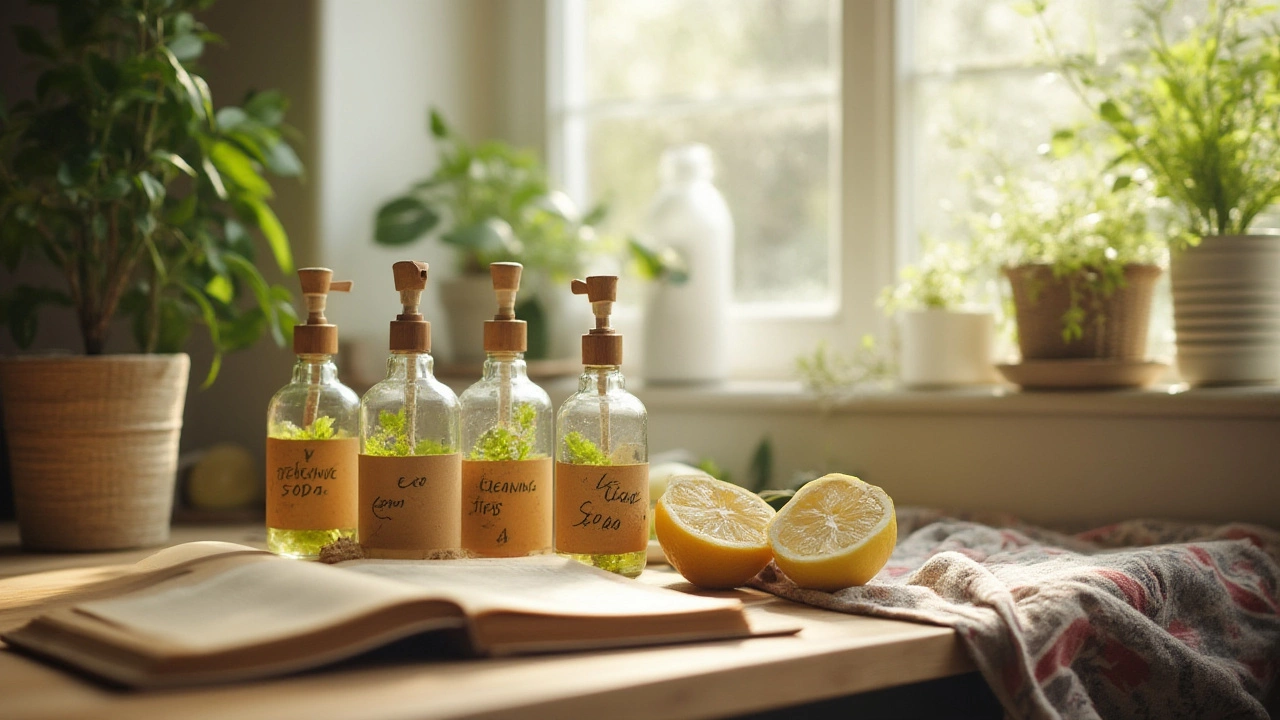Chemical-Free Cleaners: Simple, Safe Ways to Keep Your Home Spotless
Want a clean home that doesn’t rely on harsh chemicals? You’re not alone. More people are swapping store‑bought sprays for kitchen staples that are cheap, effective, and safe around kids and pets. Below you’ll get clear steps, real‑world examples, and quick hacks you can start using today.
Everyday Kitchen Heroes – Vinegar, Baking Soda & Dawn
Vinegar is a powerhouse thanks to its acidity. Mix one part white vinegar with one part water in a spray bottle and you have a streak‑free window cleaner, a grout‑brightener, and a kitchen surface wipe‑down solution. For stubborn grease, add a splash of dish soap – Dawn works wonders on greasy stovetops and even upholstery stains (just test a hidden spot first).
Baking soda is the go‑to gentle abrasive. Sprinkle it on a damp sponge to scrub sinks, tubs, or oven interiors without scratching. Pair it with vinegar for a fizzy reaction that lifts tough grime from tile joints. The combo is safe, cheap, and leaves no residue.
Natural Solutions for Specific Jobs – Windows, Oven, Upholstery
When you need crystal‑clear windows, skip the commercial spray. Use a spray of diluted vinegar, then wipe with a clean microfiber cloth. The result is a streak‑free shine that rivals any professional service.
For a chemical‑free oven clean, spread a paste of baking soda and water overnight. In the morning, spray a little vinegar, let it fizz, then wipe away the softened grime. This method removes baked‑on grease without toxic fumes.
Upholstery can be refreshed with a simple mix of warm water, a few drops of Dawn, and a cotton cloth. Gently blot stains, then rinse with a damp cloth and let air dry. It works on fabric couches, as highlighted in our “Is Dawn Dish Soap Safe for Upholstery?” guide.
All these recipes use items you probably already have, keeping costs low. That’s why eco‑friendly products sometimes seem pricey – you’re paying for branding, not the active ingredients. Making your own cleaners lets you avoid that markup.
Safety is another big win. No harsh fumes means you can clean while kids are in the next room. No strong chemicals means pets can roam freely without risk of skin irritation. And because you control the ingredients, you know exactly what’s being applied to your counters and carpets.
If you want an extra boost, add a few drops of essential oil to any vinegar‑water mix. Lemon oil gives a fresh scent and extra degreasing power, while tea tree adds natural antimicrobial benefits. Just remember a little goes a long way.
Now you have a toolbox of chemical‑free cleaners that cover almost every surface in your house. Experiment, adjust ratios to suit your needs, and you’ll see just how easy it is to keep a spotless, healthy home without reaching for the toxic aisle.
Ready to ditch the chemicals? Grab a bottle of white vinegar, a box of baking soda, and a gentle dish soap. In under an hour you can replace a handful of store‑bought cleaners with these safe, effective alternatives. Your home – and the planet – will thank you.

What Makes a Cleaner Truly Environmentally Friendly? Key Ingredients and Real-World Impact
Discover what defines an environmentally friendly cleaner, why ingredients matter, and how to select green cleaning products. Practical tips, facts, and science explained.
Read More